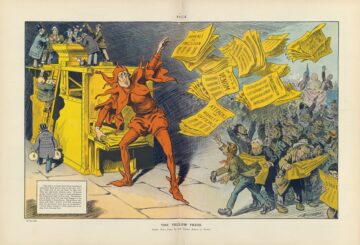Things That Fall
They say 420 drones and 24 missiles.
They say most intercepted.
They say two confirmed dead, but you know how the news lies
not by faking it, but by smoothing it.
They don’t say how long the sirens rang,
or if a dog got left on a balcony, or
if the man who always sells sunflowers at the corner
was standing there this time too.
In Lviv there was a girl who liked to draw planets.
Her teacher posted a video,
one of those voiceover ones
where someone says she had dreams,
and she did,
but she also had scabs on both knees and
once stole a pen from the bank just to see if she could.
I drank too much that night.
Watched the footage on mute.
Sometimes I think watching it with sound
makes it feel more real,
but sometimes the silence is worse
you start filling it in.
I don’t know what God wants.
I don’t know what we want.
Maybe it was always going to come to this,
drones over cities, missiles with names,
people saying “our defense was successful”
while putting plastic tarps over windows
where children used to tape paper snowflakes.
My neighbor left his porch light on all night again.
I knocked once but he didn’t answer.
Maybe he’s dead. Maybe he’s sleeping.
Maybe he’s praying in the way only people
who don’t believe in anything can.
There’s a way a city leans after it’s been hit.
Not physically
I mean it like a person who’s just gotten bad news
but hasn’t sat down yet.
One kindergarten’s roof caved in.
One subway station flooded.
One woman lost her hands.
Try writing a poem with no hands.
Try opening a can of peaches.
Try anything.
I used to think words could stop a war.
I used to think language had a kind of backbone.
But now even metaphors feel embarrassed.
Now even hope has to be rationed.
I would send this poem to her
if I thought it could reach her.
If I knew her name.
If I thought the shape of this sentence
could carry what didn’t burn.
But I don’t.
And it can’t.
And even if it could,
the signal wouldn’t hold.
Not with all that smoke in the sky.
by Sushanta Basumatary
from Rattle Magazine
— “The large-scale Russian aerial assault on Ukraine during the night of July 21st, in which over 420 drones and 24 missiles targeted multiple cities including Kyiv and Lviv. Ukrainian air defenses intercepted most of the projectiles, but civilian casualties and infrastructure damage were reported. This event has been described as one of the most intense attacks of the year and has drawn widespread international condemnation.” Sushanta Basumatary:
Enjoying the content on 3QD? Help keep us going by donating now.
 In the weeks and months after Donald Trump’s second inauguration, the number “3.5 percent” kept showing up—like a mantra, or maybe a prayer—in different corners of the internet. It was repeated in social media posts, long Reddit threads, online newsletters, political podcasts, videos, and the websites of activist organizations. “The Hopeful Math for Saving Democracy,” proclaimed a headline in Ms. Magazine. In his newsletter, independent journalist Dan Froomkin asked, “Is there a magic number for the resistance?”—and answered with that familiar figure.
In the weeks and months after Donald Trump’s second inauguration, the number “3.5 percent” kept showing up—like a mantra, or maybe a prayer—in different corners of the internet. It was repeated in social media posts, long Reddit threads, online newsletters, political podcasts, videos, and the websites of activist organizations. “The Hopeful Math for Saving Democracy,” proclaimed a headline in Ms. Magazine. In his newsletter, independent journalist Dan Froomkin asked, “Is there a magic number for the resistance?”—and answered with that familiar figure.
 When Katie Thurston was diagnosed with Stage IV metastatic breast cancer earlier this year, at age 34, people kept telling her they knew someone with the same diagnosis. Solidarity, you might think. A helpful way to relate. Not exactly: Their friend or family member had died. This scenario is “pretty recurring,” says Thurston, who starred on season 17 of The Bachelorette, and while people have good intentions—they want you to know they have experience with what you’re going through—the remark doesn’t land well. “We understand that death is a possibility in this diagnosis,” she says. “I don’t need to hear that.”
When Katie Thurston was diagnosed with Stage IV metastatic breast cancer earlier this year, at age 34, people kept telling her they knew someone with the same diagnosis. Solidarity, you might think. A helpful way to relate. Not exactly: Their friend or family member had died. This scenario is “pretty recurring,” says Thurston, who starred on season 17 of The Bachelorette, and while people have good intentions—they want you to know they have experience with what you’re going through—the remark doesn’t land well. “We understand that death is a possibility in this diagnosis,” she says. “I don’t need to hear that.” Many people sense that the United States is undergoing an
Many people sense that the United States is undergoing an  Where did Europe’s distinct Uralic family of languages — which includes Hungarian, Finnish, and Estonian — come from? New research puts their origins a lot farther east than many thought.
Where did Europe’s distinct Uralic family of languages — which includes Hungarian, Finnish, and Estonian — come from? New research puts their origins a lot farther east than many thought. My colleague Joseph Lowndes and I have been
My colleague Joseph Lowndes and I have been  Put a bagel in a toaster oven and push a button. In a few seconds, heating elements inside the oven glow red and heat the bagel. The action seems simple — after all, ten-year-olds routinely toast bagels without adult supervision. Matters look different if you inquire into what must happen to make the oven work. Pushing the button engages the mechanism of an incomprehensibly vast multinational network: the North American electrical grid.
Put a bagel in a toaster oven and push a button. In a few seconds, heating elements inside the oven glow red and heat the bagel. The action seems simple — after all, ten-year-olds routinely toast bagels without adult supervision. Matters look different if you inquire into what must happen to make the oven work. Pushing the button engages the mechanism of an incomprehensibly vast multinational network: the North American electrical grid. Less than two hours after sunrise, with the shadows still blue and slanting hard in a dense growth of balsam firs and spruces, the baby bird blundered into a fine black net strung along the ridgeline of Mount Mansfield, at 4,393 feet Vermont’s tallest mountain.
Less than two hours after sunrise, with the shadows still blue and slanting hard in a dense growth of balsam firs and spruces, the baby bird blundered into a fine black net strung along the ridgeline of Mount Mansfield, at 4,393 feet Vermont’s tallest mountain.  A human female is born with all the egg cells she will ever have. The possibility for the development of new oocytes is zero. Given this constraint, it is crucial that these gametes remain healthy and viable for decades until they are needed to form an embryo. Irrespective of the ‘age’ of the fertilized oocyte, the resulting embryo has the characteristics of a freshly born cell, indicating the existence of mechanisms that counteract accrued cellular damage and keep the egg fresh. What are these processes that drive the prolonged life of human egg cells?
A human female is born with all the egg cells she will ever have. The possibility for the development of new oocytes is zero. Given this constraint, it is crucial that these gametes remain healthy and viable for decades until they are needed to form an embryo. Irrespective of the ‘age’ of the fertilized oocyte, the resulting embryo has the characteristics of a freshly born cell, indicating the existence of mechanisms that counteract accrued cellular damage and keep the egg fresh. What are these processes that drive the prolonged life of human egg cells? I begin this chapter with three outrageous facts:
I begin this chapter with three outrageous facts: Here’s an old paradox. The scientist declares that science is the only way to truth and that philosophy is bunk. “Over here in my department,” he proclaims, “we really learn things about reality. We poke and prod the universe and see what happens. We formulate hypotheses, design and conduct experiments to test them, analyze the data, and form justified conclusions about the way the world works on that basis. Over in the philosophy department, they don’t do any of that. They make shit up. What I’m doing is REAL and IMPORTANT and GENERATES KNOWLEDGE. Philosophers do none of those things!” And the philosopher, hearing this rant, has a ready reply: “What experiments did you do to establish the truth of that little speech? None at all! (And if you did run an experiment, I’d love to hear about the setup!) Turns out that you’re endorsing a bunch of philosophical claims. So you yourself have a philosophy all your own! Philosophy is inescapable for both of us. The only difference is that I’m honest about it.”
Here’s an old paradox. The scientist declares that science is the only way to truth and that philosophy is bunk. “Over here in my department,” he proclaims, “we really learn things about reality. We poke and prod the universe and see what happens. We formulate hypotheses, design and conduct experiments to test them, analyze the data, and form justified conclusions about the way the world works on that basis. Over in the philosophy department, they don’t do any of that. They make shit up. What I’m doing is REAL and IMPORTANT and GENERATES KNOWLEDGE. Philosophers do none of those things!” And the philosopher, hearing this rant, has a ready reply: “What experiments did you do to establish the truth of that little speech? None at all! (And if you did run an experiment, I’d love to hear about the setup!) Turns out that you’re endorsing a bunch of philosophical claims. So you yourself have a philosophy all your own! Philosophy is inescapable for both of us. The only difference is that I’m honest about it.” Put a bagel in a toaster oven and push a button. In a few seconds, heating elements inside the oven glow red and heat the bagel. The action seems simple — after all, ten-year-olds routinely toast bagels without adult supervision. Matters look different if you inquire into what must happen to make the oven work. Pushing the button engages the mechanism of an incomprehensibly vast multinational network: the North American electrical grid.
Put a bagel in a toaster oven and push a button. In a few seconds, heating elements inside the oven glow red and heat the bagel. The action seems simple — after all, ten-year-olds routinely toast bagels without adult supervision. Matters look different if you inquire into what must happen to make the oven work. Pushing the button engages the mechanism of an incomprehensibly vast multinational network: the North American electrical grid.